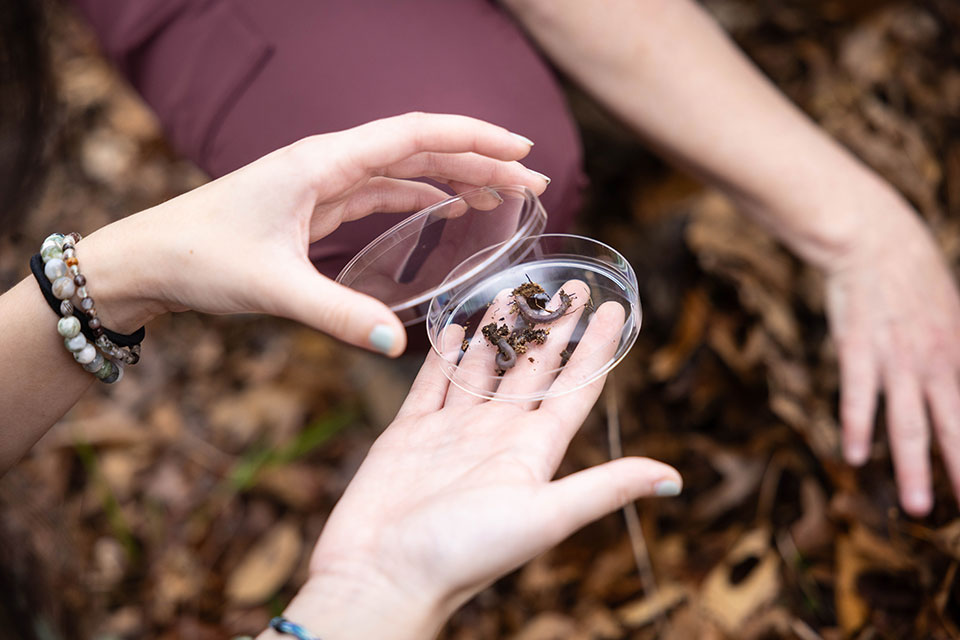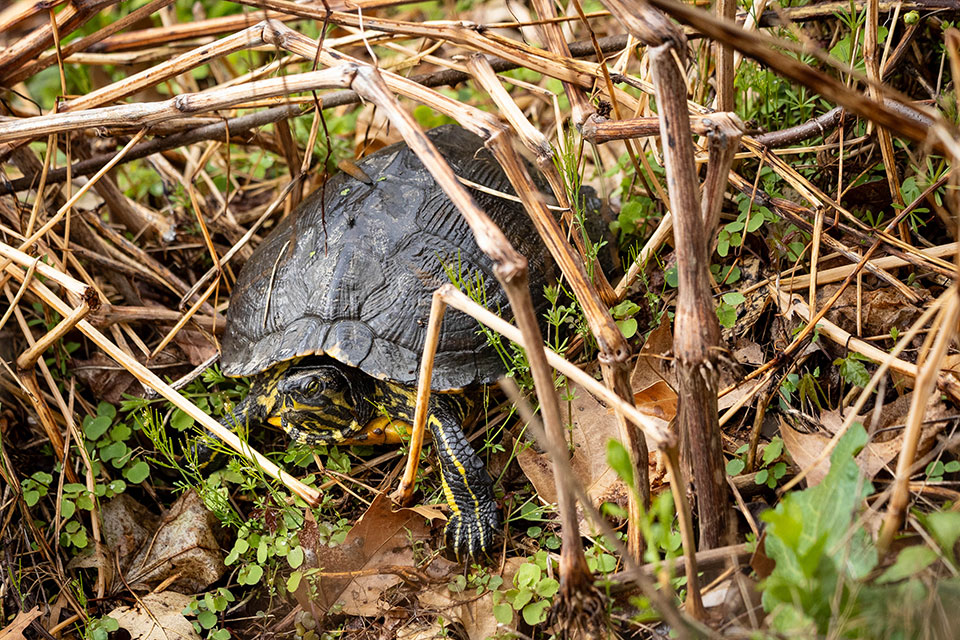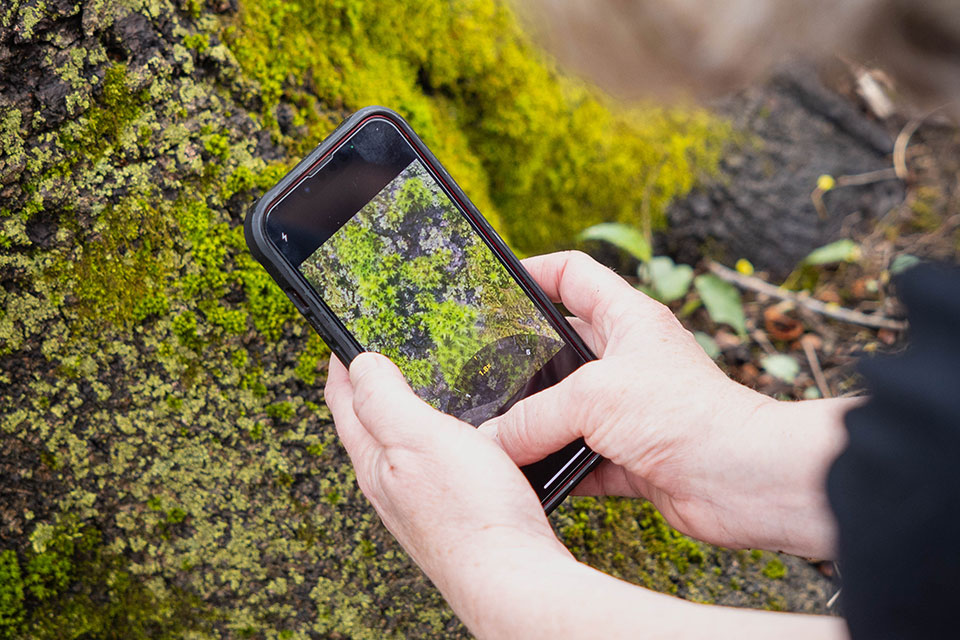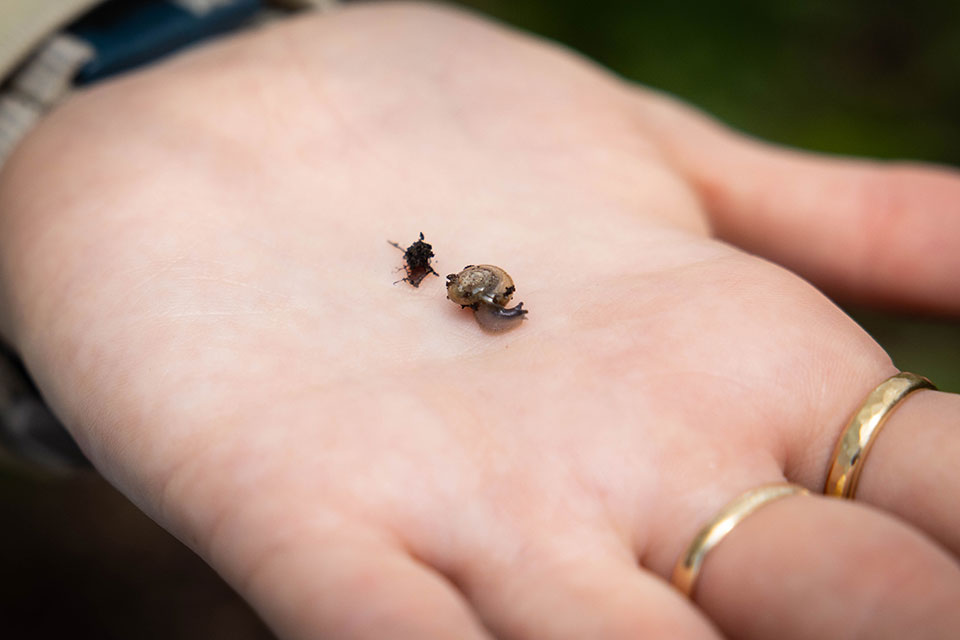Documenting species in your own backyard
Brandeis students take the City Nature Challenge
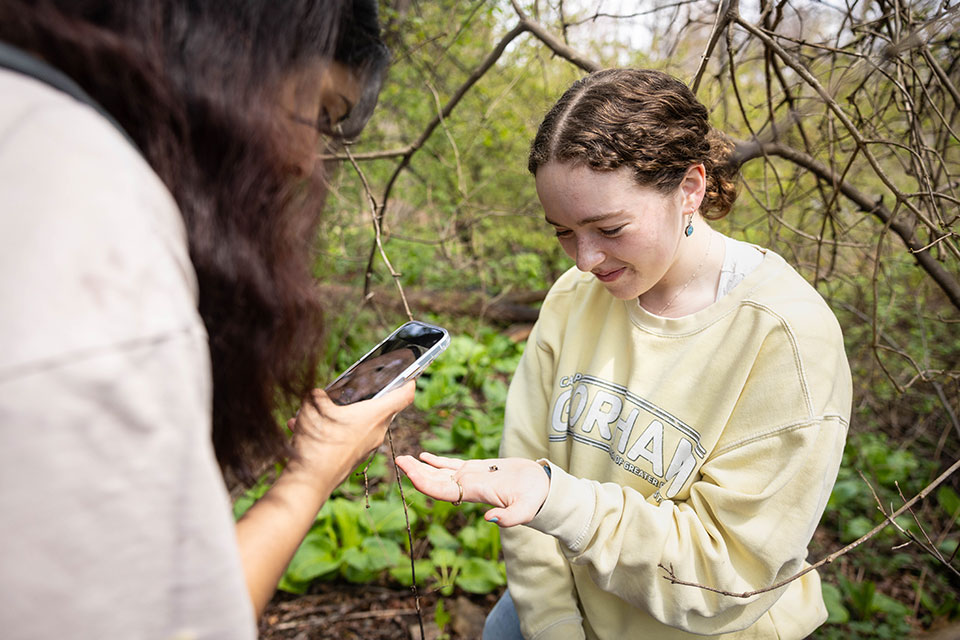
Photography by Dan Holmes
May 1, 2025
For the ninth consecutive year, Brandeis University students joined the City Nature Challenge, a massive worldwide “bioblitz” that strives to document urban biodiversity.
Under the guidance of environmental studies professor Colleen Hitchcock, students ventured across campus during class, collecting more than 1,000 observations and noting over 200 species using the citizen science app iNaturalist. The group added to Brandeis’ already impressive slate of 60,000 observations and 2,800 species observed on campus since 2016. Hitchcock's annual effort has created valuable data that helps answer crucial questions about urban biodiversity patterns, seasonal changes, campus impacts and invasive species spread while connecting students directly to the scientific process. “Engaging students in the City Nature Challenge is a great way to put natural history learning into action,” says Hitchcock. “It can change the way you think about the species you interact with everyday.”
On the hunt
To prepare for the City Nature Challenge, Hitchcock’s students first learned how to use the iNaturalist smartphone app to create research-grade data. By participating in this process, participants could closely observe hidden biodiversity in their own backyard while building skills related to observation, identification and access and safe use of data.

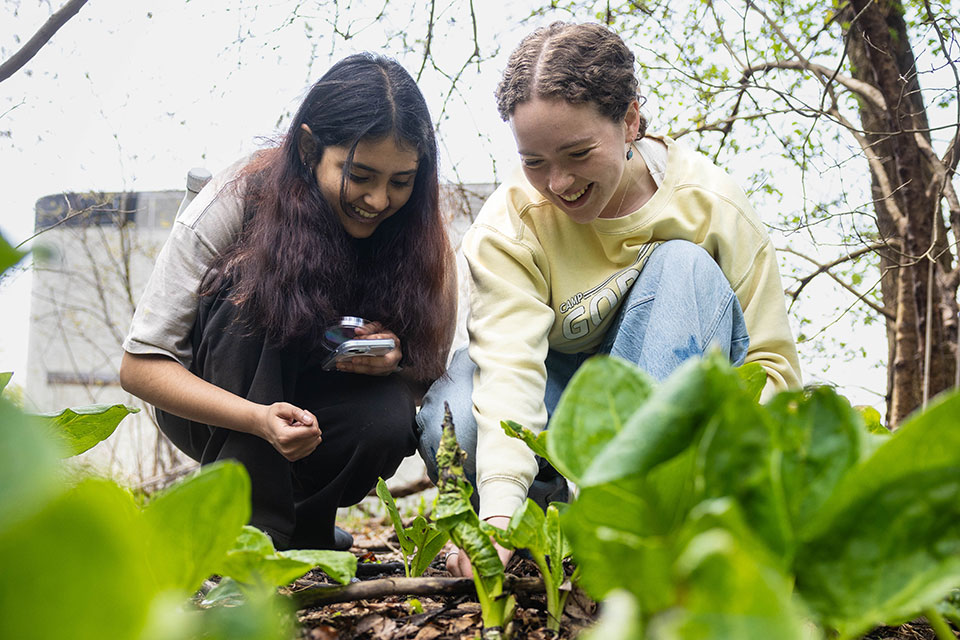
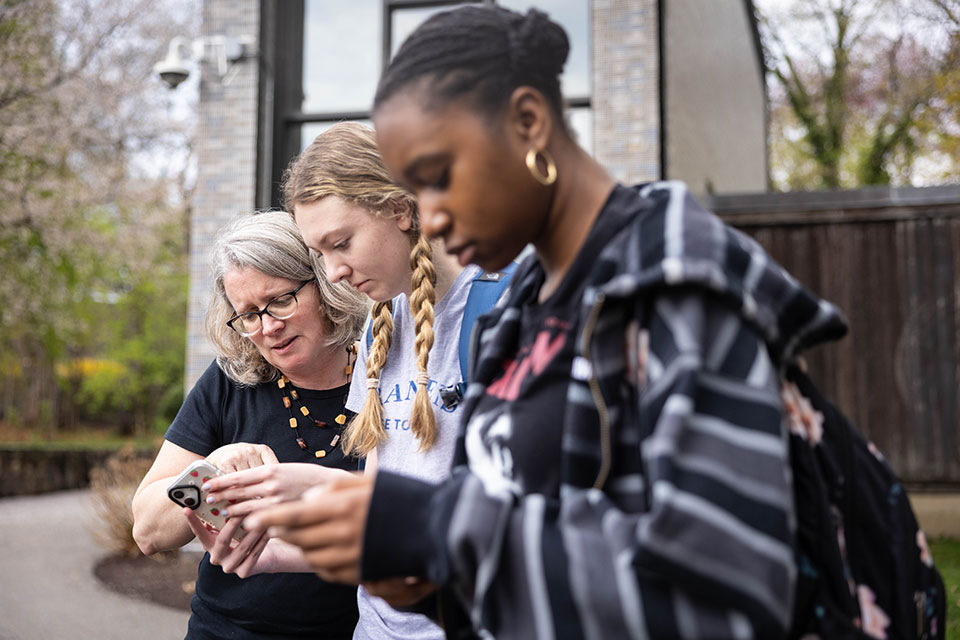
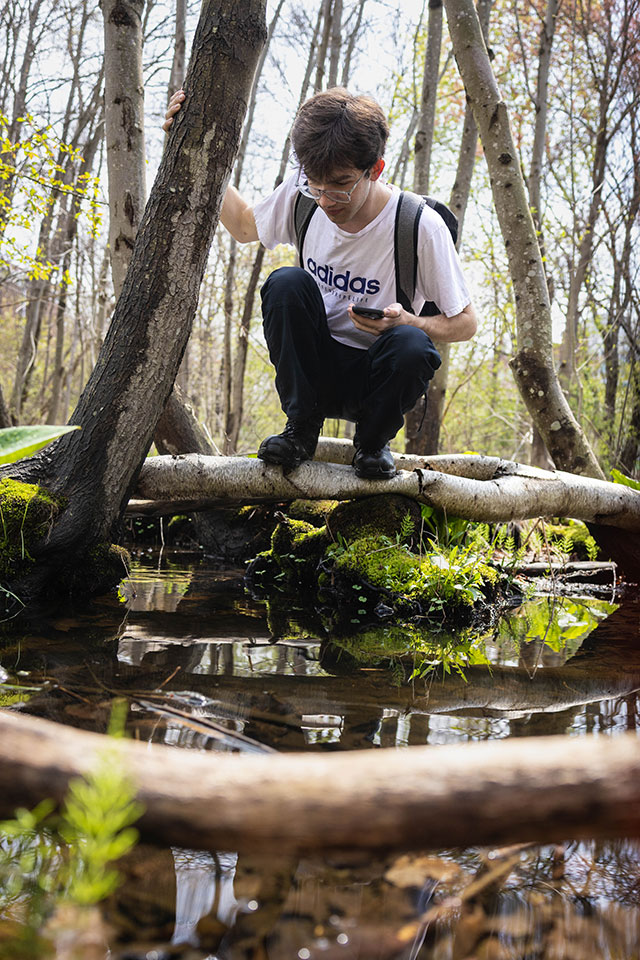
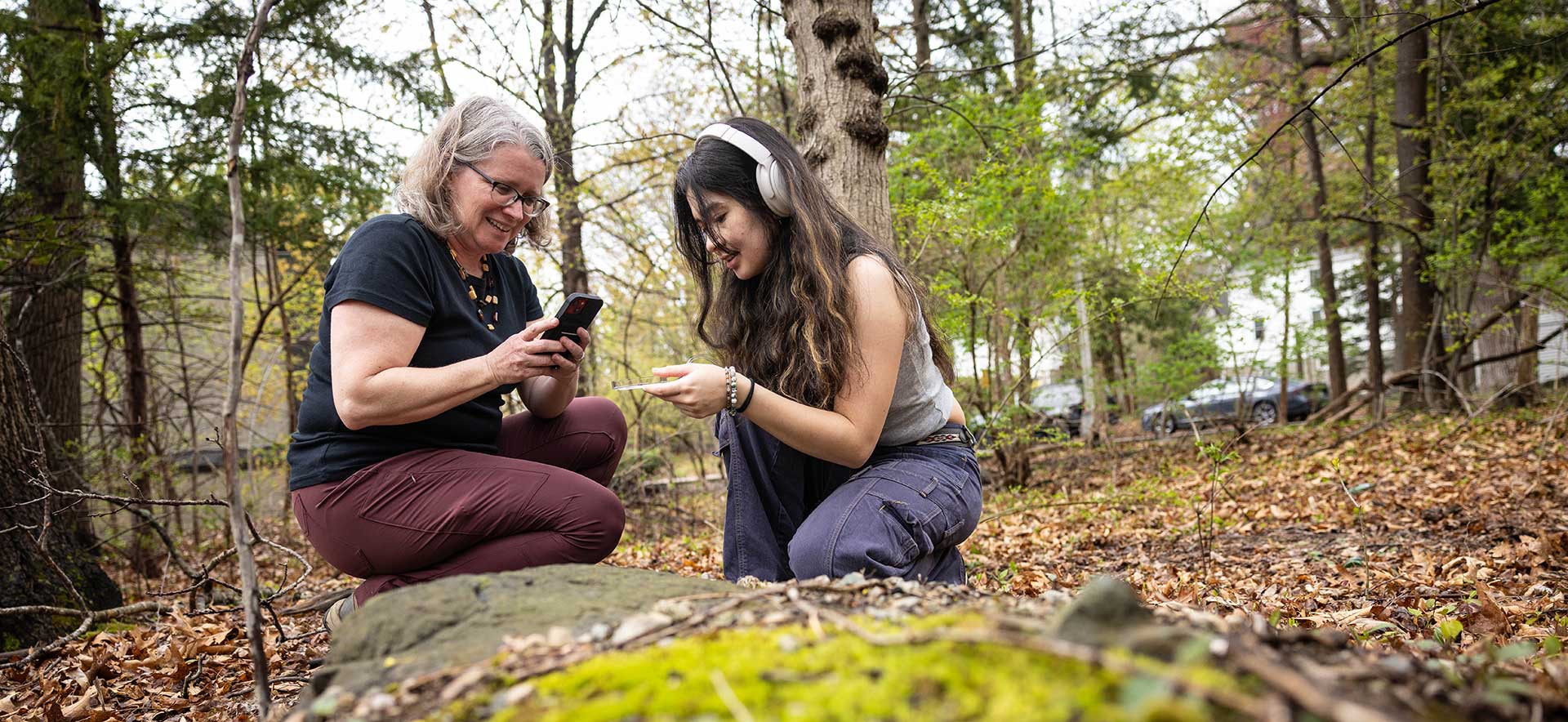
Species found
Over three days, students documented species large and small, from maples to muskrats to mosses. Keeping track of those species can help answer enormous questions, says Hitchcock: How does biodiversity change as we travel from the edges of a city to its core? How can warming urban climate affect nature’s cycles? Where have invasive species gained a foothold, and where are they spreading? You can see the data that students in at Brandeis have collected since 2016 on the iNaturalist web platform.
